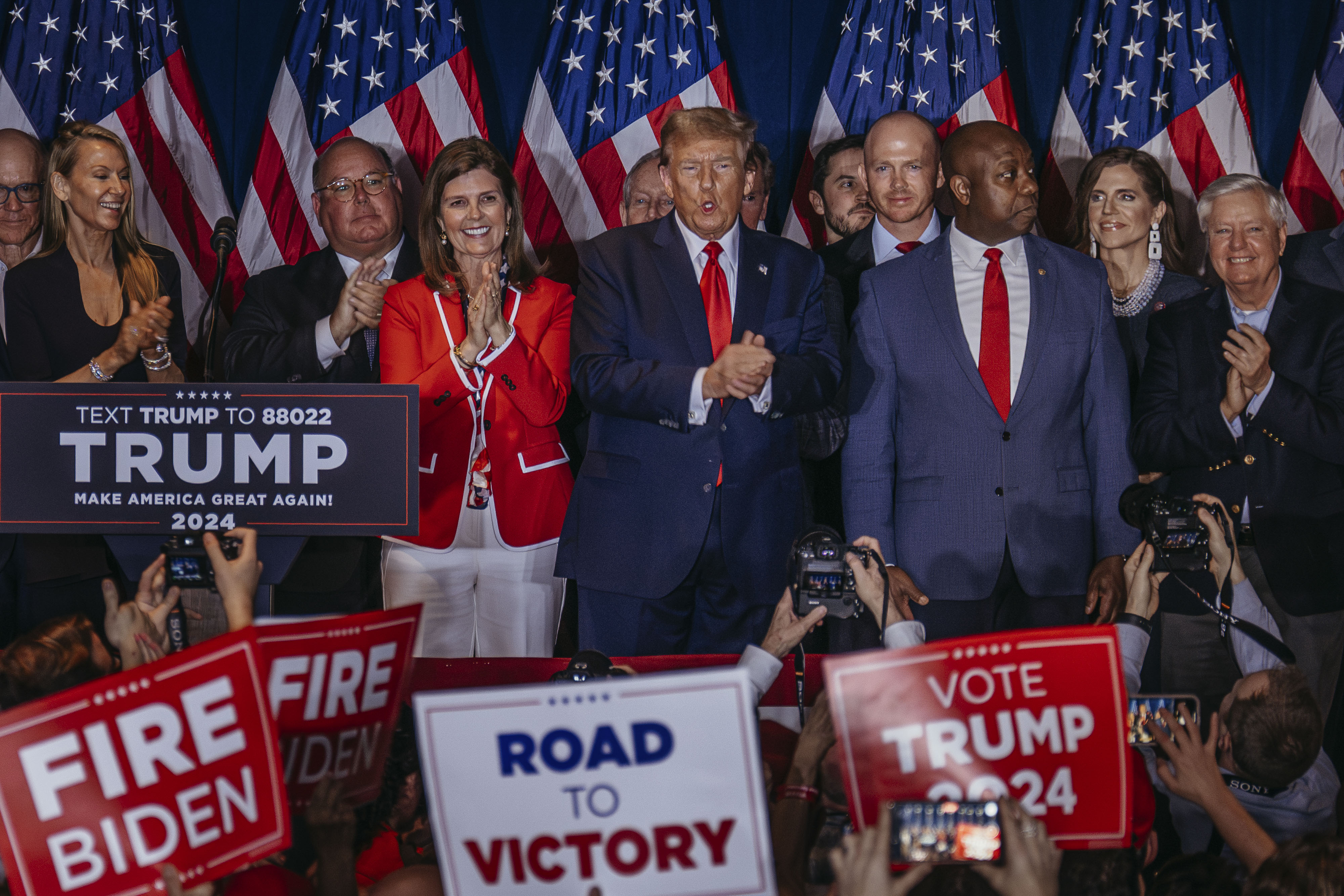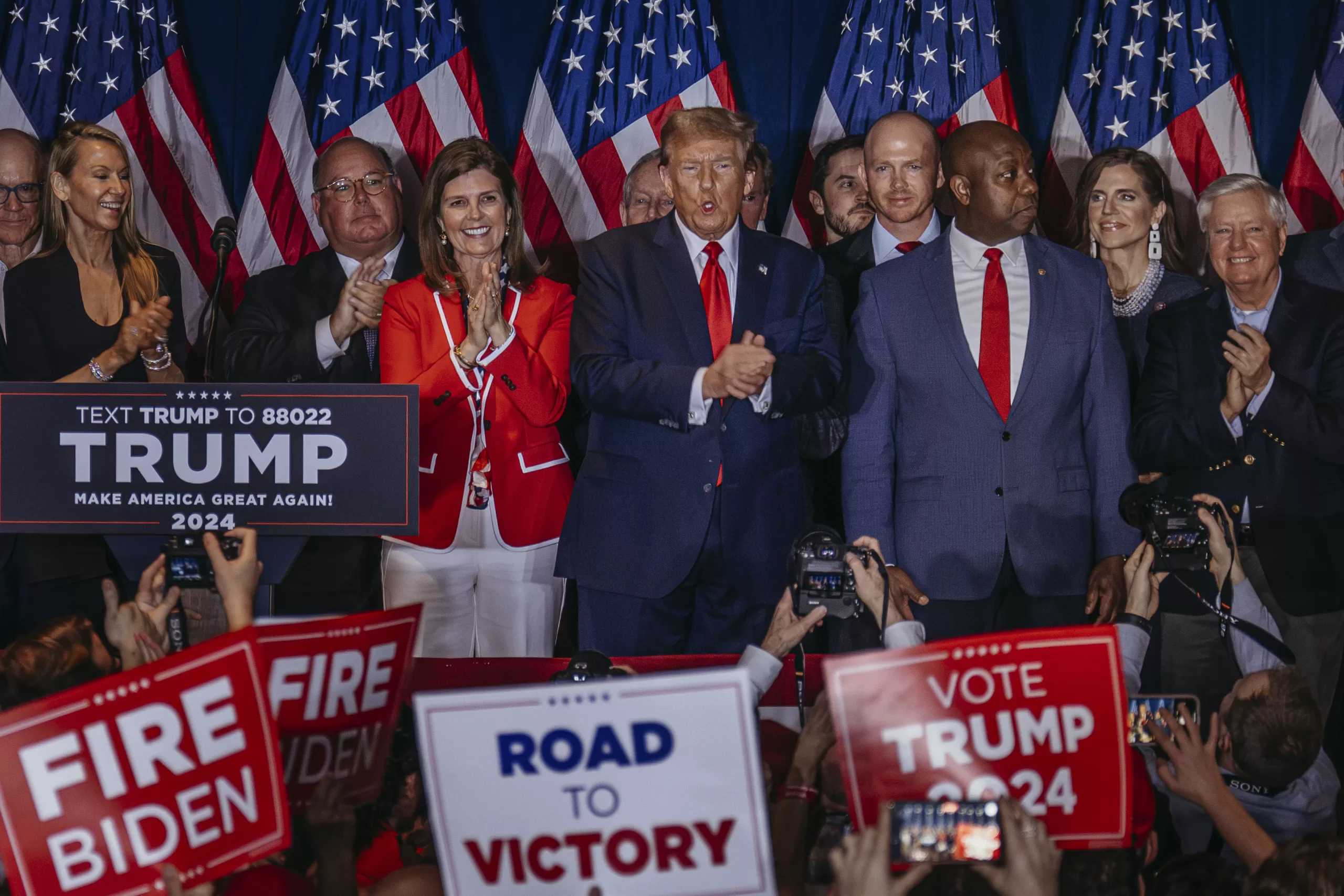
“It’s a testament to how red South Carolina is as a state,” said former Republican Gov. Mark Sanford. “It’s a testament to people being squeezed at lower socio-economic levels … and wanting something different.”
And Haley, he said, “probably didn’t mind the home fires as full as she should have.”
Here are six things South Carolina told us about the primary as it moves Michigan, Super Tuesday and beyond.
It’s hard to find a GOP demographic that doesn’t love Trump
If you really need more evidence of Trump’s dominance over the Republican Party — well, South Carolina had it in spades.
A majority of every age demographic picked Trump over Haley. Men and women both backed Trump. Voters across all income ranges backed him, and he only narrowly lost college graduates while dominating among those without a college degree.
Trump has a weak spot. It’s GOP primary voters who believe President Joe Biden legitimately won the 2020 election — which he did — or who think Trump would not be fit for the presidency if convicted of a crime. A large majority of those voters were with Haley. Her problem is that they were just over a third of the overall electorate in both questions.
But that’s not where the bulk of the GOP is today. From top to bottom, the Republican Party is Trump’s party. There are no reliable pockets of dissent.
New Hampshire’s more upwardly mobile and better-educated demographics gave Haley a false sense of daylight. In South Carolina, among older, whiter and more religious voters, she came back down to earth.
One big warning sign for Trump
Behind every silver lining, there has been a cloud for Trump during the GOP primary, and otherwise sunny South Carolina proved no exception. With about three-quarters of the expected vote in, some 40 percent of voters rejected Trump.
That number itself isn’t a problem in a primary. But it includes some serious reasons for concern in a general election. Trump lost moderate and liberal voters to Haley by a wide margin, according to exit polls. And, according to AP VoteCast, a bit over 1 in 5 GOP primary voters said they would not vote for Trump in November if he was the party’s nominee.
Perhaps the clearest illustration of this dynamic came in the city of Charleston, where Haley racked up more than 80 percent of the vote in some precincts.
Haley saw Trump’s soft underbelly, and underscored it in her remarks, telling supporters he “drives people away.”
“I’m an accountant. I know 40 percent is not 50 percent,” Haley said Saturday evening. “But I also know 40 percent is not some tiny group. There are huge numbers of voters in our Republican primaries who are saying they want an alternative.”
The polls were (mostly) right
Trump’s more-than-20-point victory was roughly in line with preelection polls. The final RealClearPolitics average put him at 61 percent, to Haley’s 38 percent — close to where the vote count is set to finish, though some polls did show a larger Trump lead.
Noting this isn’t just for scorekeeping’s sake: Since 2016, pollsters have struggled to measure Trump’s support accurately — and Trump’s strong position in the general election polling has raised questions about whether they have it right, have overcorrected or are still missing some of his supporters.
Primary polling isn’t necessarily indicative of the general election, but so far pollsters have mostly gotten it right. The final Iowa poll was spot on. Haley overperformed slightly in New Hampshire thanks to a surge of independent voters whom pollsters missed. And South Carolina was somewhere in between.
The real dividing line in Southern elections is race
The Palmetto State primary highlighted the single most determinative factor in Southern elections: How racially polarized the region’s voters remain.
Consider tonight’s Republican primary: Exit polls showed that 92 percent of the electorate was white — in a state where people of color make up more than one-third of the population.
By contrast, Black voters historically make up about two-thirds of the electorate in South Carolina’s Democratic primaries.
We don’t yet have a perfect comparison to the Democratic primary earlier this month — it was so uncompetitive that media outlets didn’t run exit polls — but as one measure, roughly 60 percent of those who submitted Democratic absentee ballots in the state were Black.
None of this is surprising. There is a reason Biden was focused on Black voters in South Carolina — both in his 2020 victory that propelled him to the nomination and also earlier this month as
an early general election stress test.
But it’s a sign that a major political fault line continues to persist.
And the ability to use race as a proxy for partisanship — and vice versa — has significant implications further down the ballot, when political mapmakers are drawing congressional, state legislative and local boundaries.
Federal civil rights law makes it illegal to discriminate against minority voters when drawing political boundaries but doesn’t make it illegal to discriminate against Democrats. But how do you disentangle that when the two are effectively interchangeable?
The Supreme Court is
considering a case now on that very question, based out of congressional lines in South Carolina, which just demonstrated how racially polarized its electorate is.
A decision is expected imminently.
Trump has fully captured the white evangelical vote
South Carolina, where
22 percent of all the religiously affiliated identify as white evangelicals, is the ultimate proving ground for a candidate’s strength among this key voting bloc. It’s a better barometer even than Iowa, which boasts just 18 percent white evangelicals.
And on Saturday, Trump cleaned up with them, winning about three-quarters of white born-again or evangelical Christians,
according to the exit polls. This, despite facing
a trial next month on charges stemming from hush money payments to a porn star. Sanford, who faced a flaying from the South Carolina faithful in 2009 after his own affair, expressed shock at how Trump seems to hold these voters in the palm of his hands.
“The very people that, again, legitimately poured acid on my head in 2009 — I mean were rough right, some of these conversations were just searing — they’re the very people who are proponents for Trump,” Sanford said. “My head is spinning. Are you kidding me? You were torturing me not that many years ago. And now you’re making excuses for this guy over here? I don’t get it.”
At least it can’t get much worse for Haley
Haley just lost her home state by double digits. She’s yet to win a nominating contest. And Trump is on track to lock up the GOP nod by mid-March.
The one bright spot in all of that for Haley: She now heads into Michigan and Super Tuesday facing such low expectations she actually has an opportunity to overperform — even if she still loses. She got the ball rolling on that spin in her concession speech, when she cast her roughly 40-percent vote share as “not 50 percent” but “not some tiny group,” either.
Haley’s campaign is pinning its hopes on Super Tuesday, where 11 of the 16 contests are open or semi-open primaries. Her team is aiming to recreate the coalition that got her within a dozen percentage points of Trump in New Hampshire — and build on it.
But even in Super Tuesday states with histories of nominating moderate Republicans in primaries, like Massachusetts and Vermont, polls show Trump trouncing Haley.
Campaigns don’t end as much as they run out of money, and Haley has plenty of that.
While saying the results “in no way diminish the achievements — and personal popularity — of a transformational governor in Nikki Haley,” Rob Godfrey, Haley’s former deputy chief of staff as governor, who is remaining neutral in the primary, said, “tonight’s results acknowledge Donald Trump’s broad, deep and potentially insurmountable support among Republicans.”
